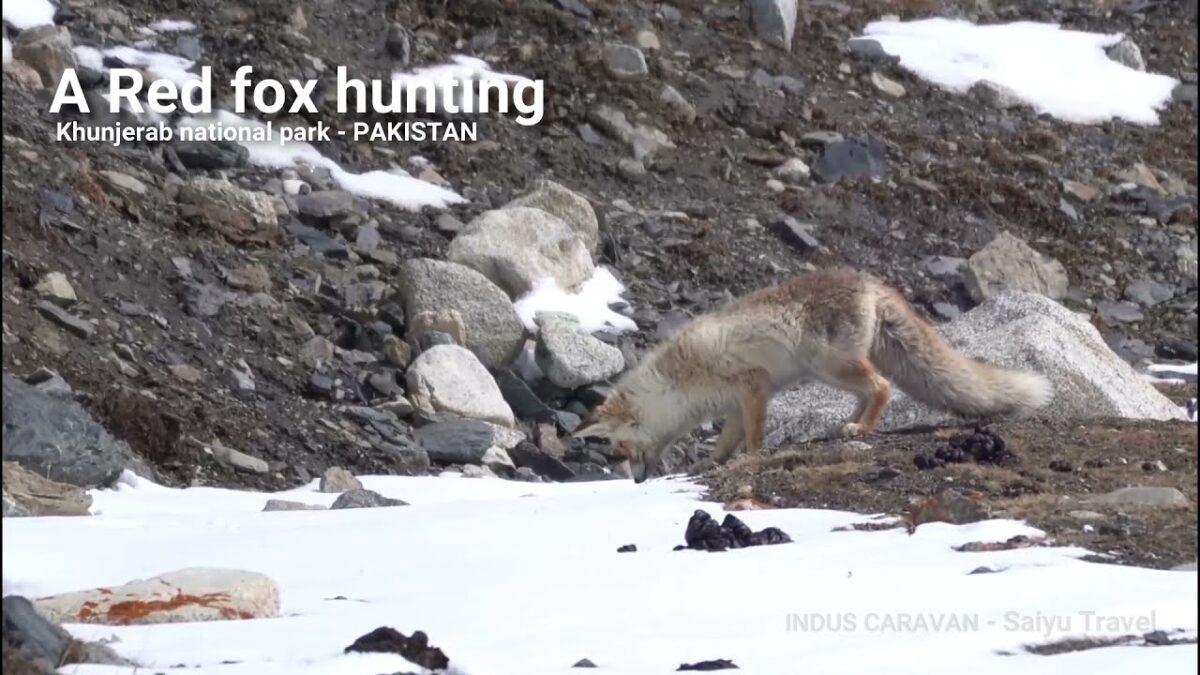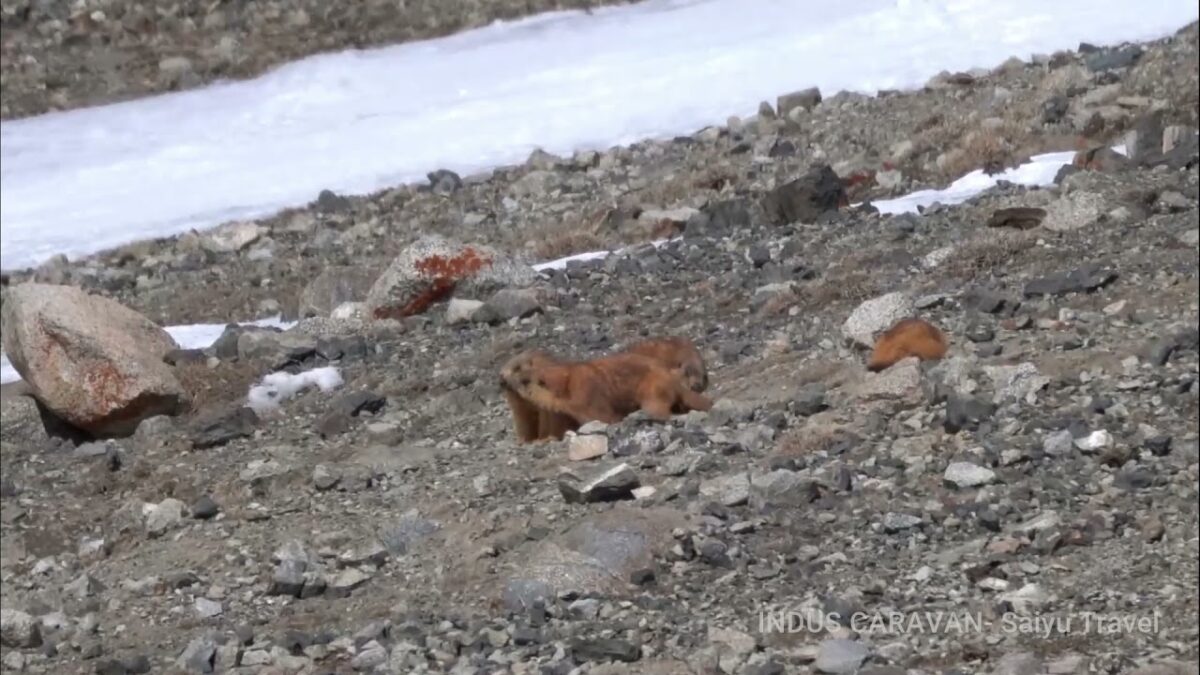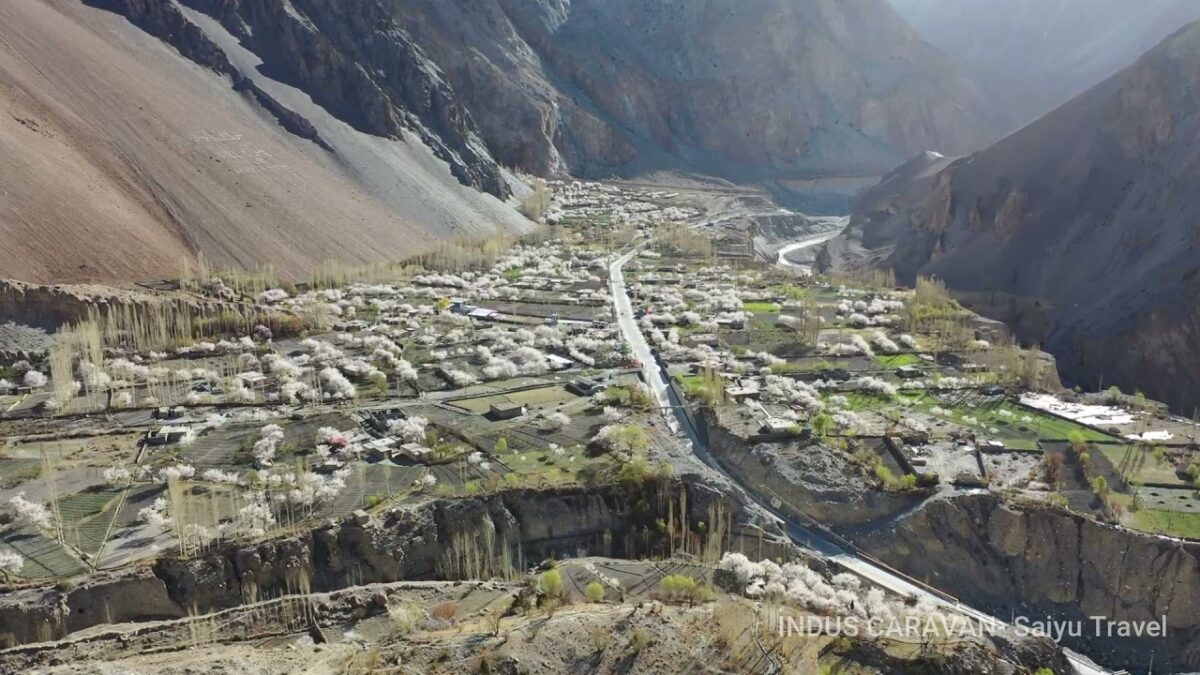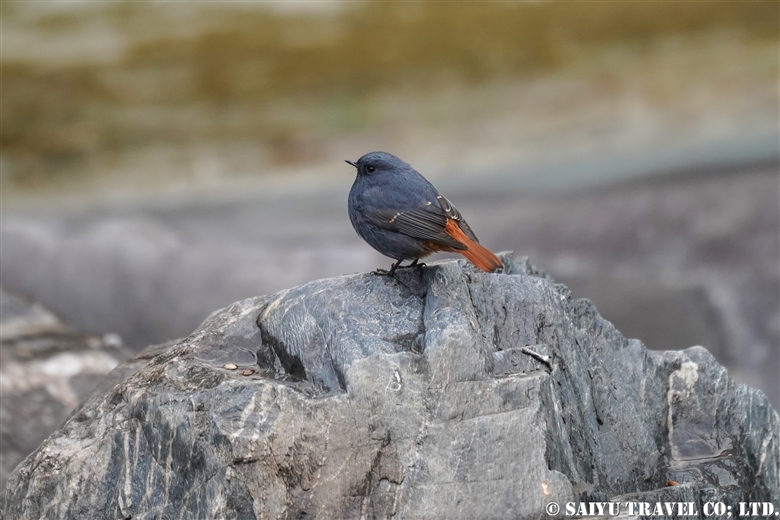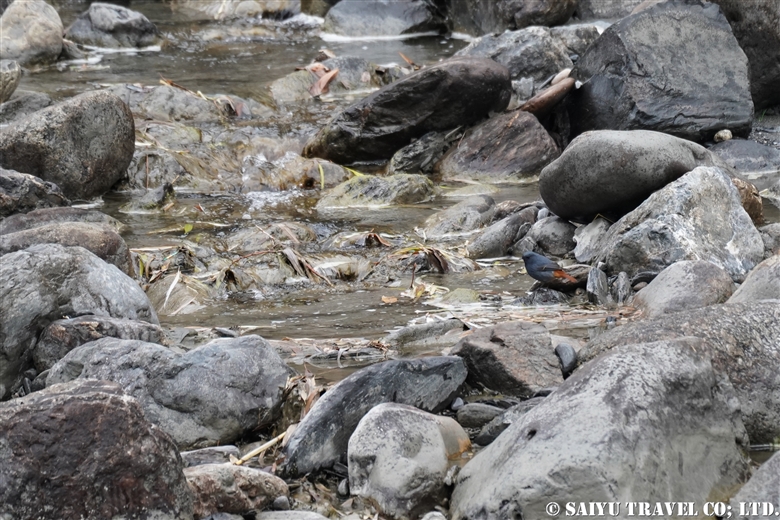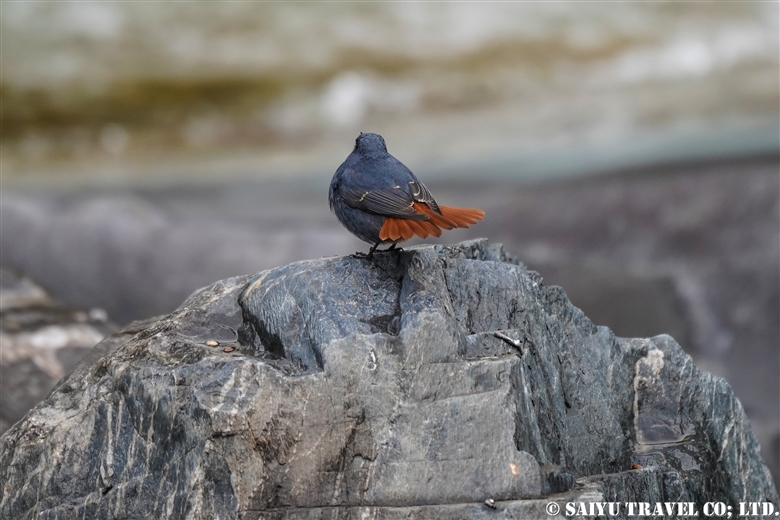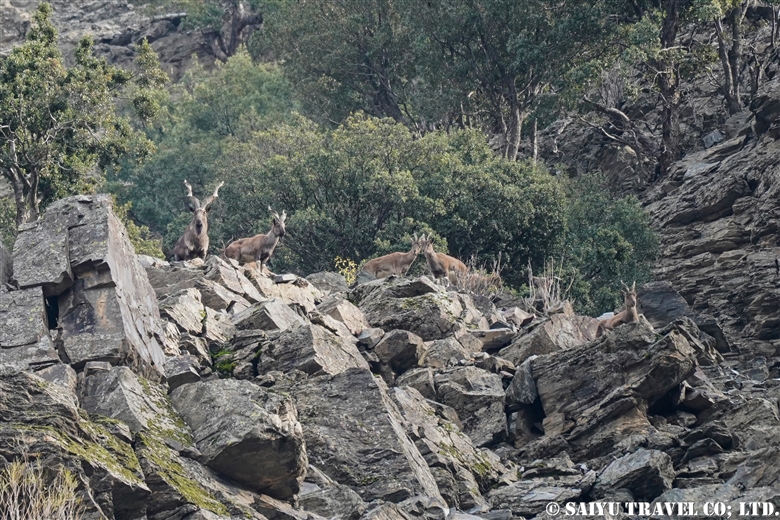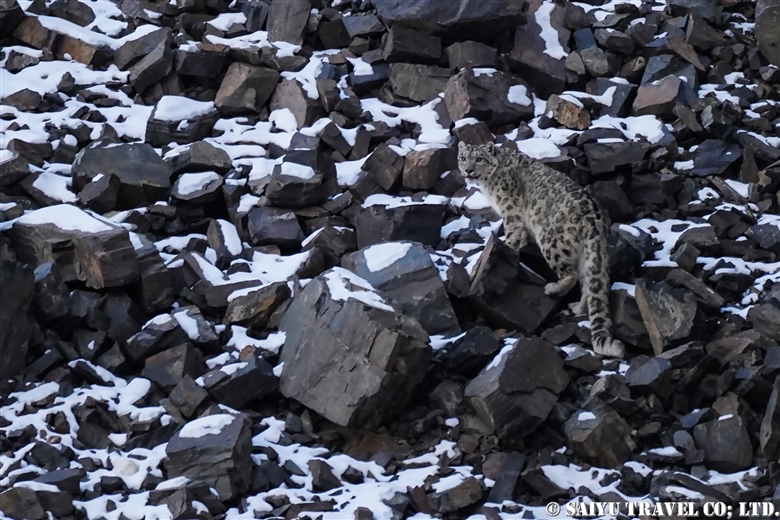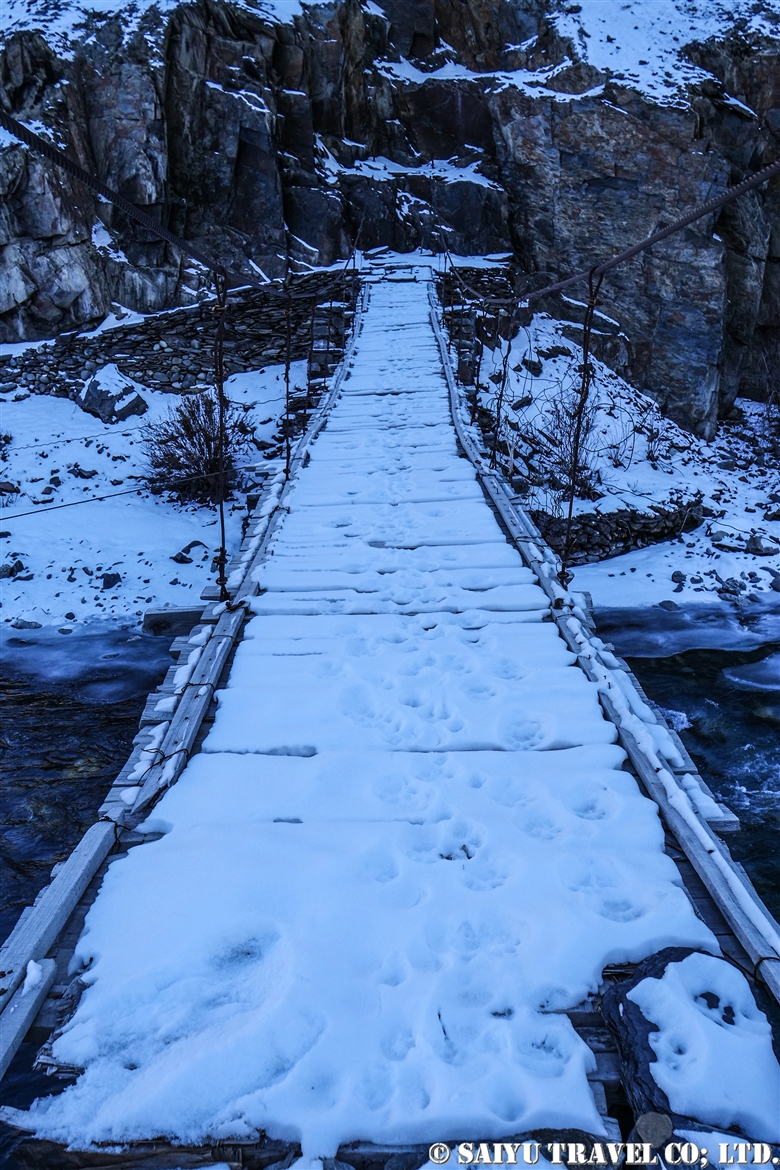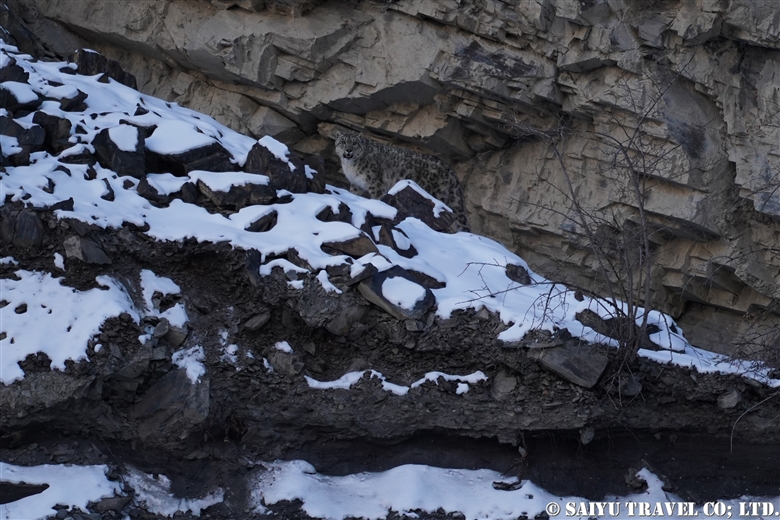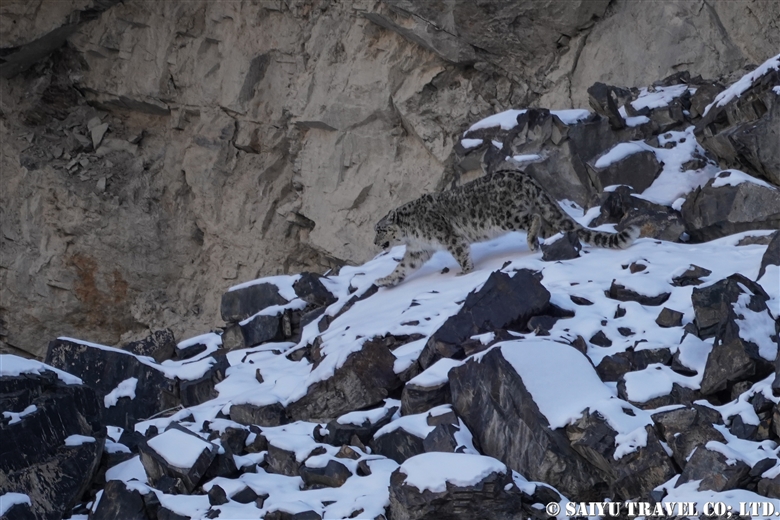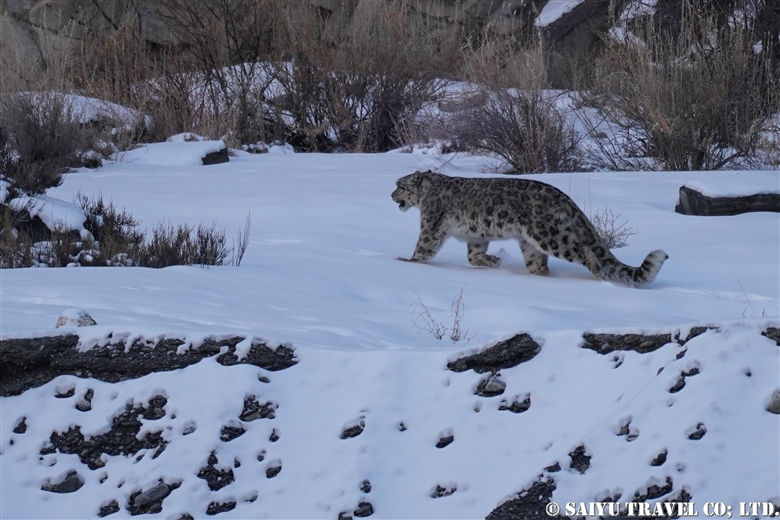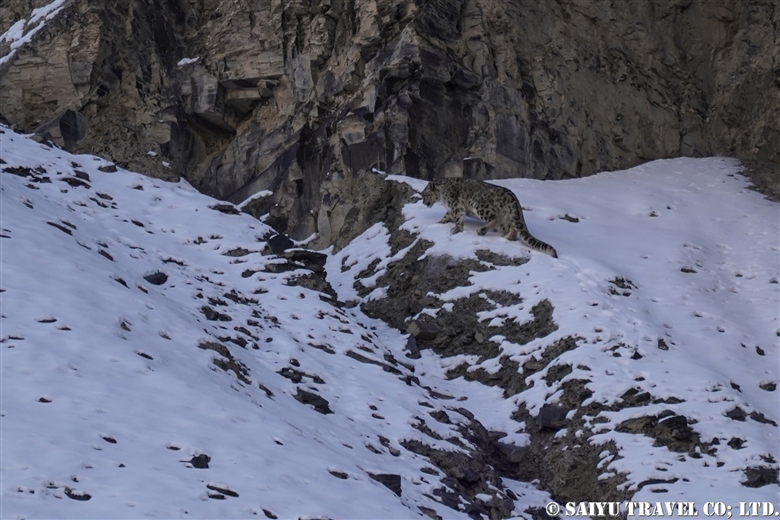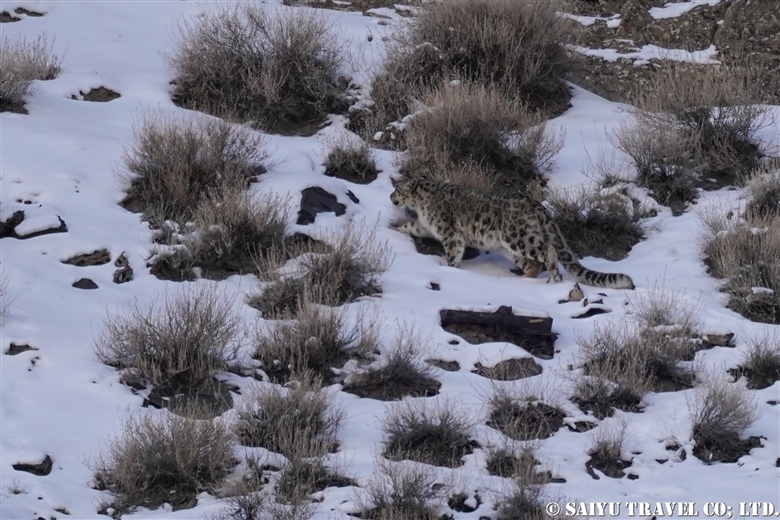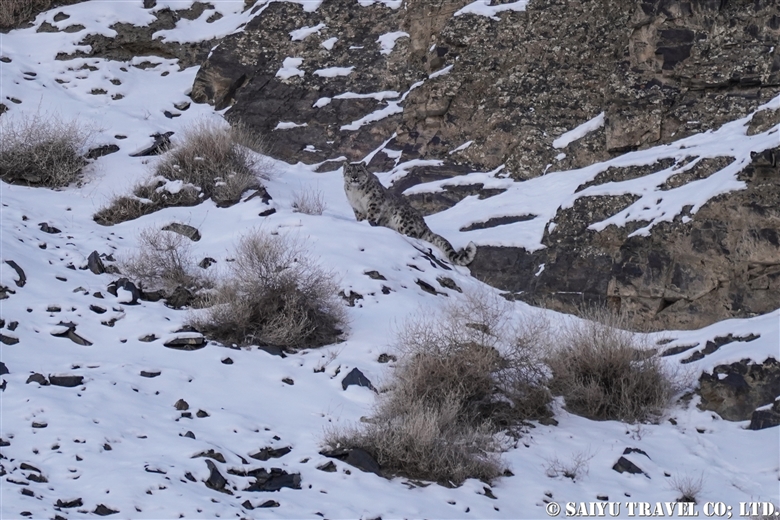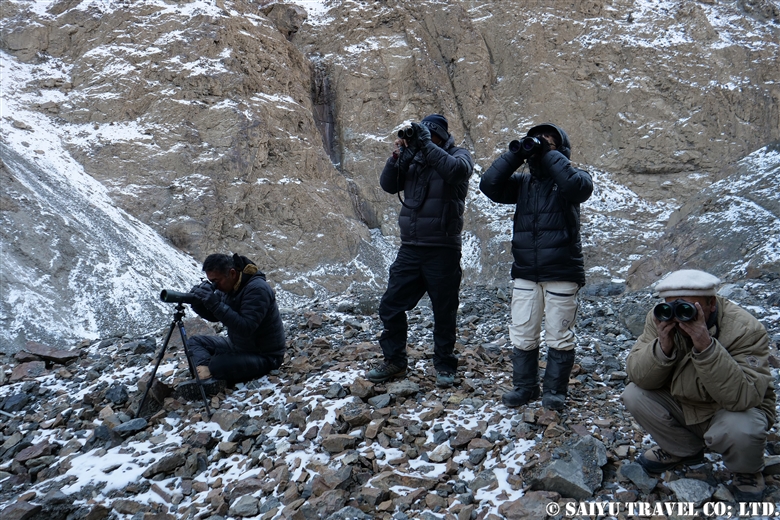This is a continuation of our morning sighting of the snow leopard mother and cubs, as we followed them for the day.
When we first saw the leopard family, they had been feeding on the ibex that the mom probably killed for breakfast until we disturbed them. Then we could find them again on the nearby mountain slope, not far from their prey. At first, they were laying on the slope, but then as the day got hotter, they moved around into different spots of grass and then, into the shade of the rocks. They did not spend the entire day sleeping, but instead I could sense that they were struggling to find a cool spot to rest.
The video below, of the leopards below was taken during the day, very far away from them.
Snow leopards during the daytime
Then, finally, came the long-awaited for sunset. At first, the family of three were staying in the same place, but by the time evening fell, they went their separate ways. The mother snow leopard began walking towards the leftover ibex that was killed that morning!
Snow leopard at dusk
It looked like the mother snow leopard was telling us “Hurry up and go!” as she was just out of reach from her precious kill. The cubs looked on at the scene, from the rocks above. As darkness fell, their time begins again.
It was an amazing opportunity to be able to spend the whole day watching snow leopards.
Videography & text :Mariko SAWADA
Observation : April 2021, Khunejrab National Park, Gilgit-Baltistan
*Contact us, Indus Caravan for more information or to make arrangements for observing wildlife of Pakistan.
*Youtube Facebook Instagram << Please check our update activity !
Category : = Video Clip Gilgit-Baltistan > - Snow Leopard > ◆ Video Breathtaking Views of Pakistan > - the Karakoram Highway > ◆ Gilgit-Baltistan > - Khunjerab National Park > ◇ Wildlife of PakistanTag : Pakistan Travel Blog , Snow Leopard , Snow Leopard Pakistan , Travel Pakistan Blog , Pakistan Travel company , Wildlife of Pakistan , Pakistan tour operator , Pakistan Photography Tour , Indus Caravan , Wildlife Photography Pakistan , Saiyu Travel Pakistan , Wildlife Tour Pakistan , Khunjerab National Park , Snow Leopard Expedition , Pakistan Blog , Snow Leopard Conservation





-1200x675.jpeg)
-1200x675.jpeg)
-1200x675.jpeg)





















